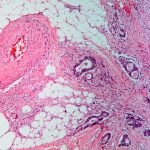With the rise of microbes that have evolved resistance to even the most powerful antibiotics, researchers are getting creative. One solution: develop materials with microscopic surface texturesthat kill bacteria or prevent them from latching on. The nanoscale spikes of an insect’s wing, for example, have been shown to be potent killers of Pseudomonas aeruginosa, and a new study points to the bacteria-fighting promise of a surface texture that mimics shark skin.Known as Sharklet, the pattern consists of an arrangement of microscopic ridges that resemble the tooth-like structures, or denticles, of shark skin. According to the study, published today (September 17) in Antimicrobial Resistance and Infection Control, Sharklet reduced methicillin-sensitive Staphylococcus aureus (MSSA) and methicillin-resistant S. aureus (MRSA) by as much as 97 percent and 94 percent, respectively, compared to smooth controls.
“The Sharklet texture is designed to be manufactured directly into the surfaces of plastic products that surround patients in hospital, including environmental surfaces as well as medical devices,” Ethan Mann, a research scientist at micropattern manufacturer Sharklet Technologies, said in a press release. “Sharklet does not introduce new materials or coatings—it simply alters the shape and texture of existing materials to create surface properties that are unfavorable for bacterial contamination.”












RSS